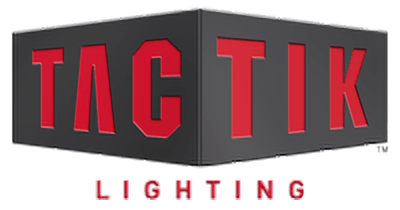Challenges in Finding Reliable Commercial Lighting Solutions for Global Buyers
In the rapidly evolving landscape of commercial lighting, global buyers face a myriad of challenges in sourcing reliable solutions. As reported by the Market Research Future (MRFR), the commercial lighting market is projected to grow at a CAGR of over 7% between 2020 and 2027, indicating a significant demand for innovative and energy-efficient lighting options. However, the increasing number of suppliers and varying product standards can complicate procurement processes for businesses. According to a recent study by Grand View Research, approximately 55% of companies cite difficulties in assessing quality and reliability as a major obstacle when selecting commercial lighting sources. This overwhelming diversity necessitates a well-informed approach for buyers to navigate the market, ensuring they select products that not only meet their operational needs but also adhere to sustainability standards, thereby impacting both performance and costs.

Emerging Trends in Commercial Lighting and Their Impact on Global Markets
The commercial lighting market is evolving rapidly, with emerging trends significantly impacting global buyer strategies. According to TrendForce's recent report, the LED general lighting sector is projected to flourish, driven by a compound annual growth rate (CAGR) of 5.98% from 2023 to 2029. This growth presents a lucrative opportunity, with the market forecasted to reach an astounding $14.18 billion, primarily influenced by innovations in smart lighting and energy-efficient technologies.
As manufacturers pivot toward niche applications, the emphasis on energy-efficient fixtures and smart technology integration becomes increasingly vital. The potential for customization and retrofitting solutions is considerable, allowing businesses to upgrade existing infrastructures without complete overhauls. Furthermore, the surge in demand for smart lighting, projected to escalate from $22.45 billion in 2024 to approximately $165.89 billion by 2034, underscores the shift towards intelligent, adaptive lighting solutions that cater to the dynamic needs of the commercial sector.

Identifying Quality Standards: How to Evaluate Commercial Lighting Solutions
Evaluating commercial lighting solutions can be a daunting task for global buyers, particularly given the sheer variety of products available in the market today. One of the most critical aspects to consider is the quality standards related to color accuracy and consistency. Not all LED lights are created equal, and even those with similar Color Rendering Index (CRI) scores can perform differently in real-world settings. Therefore, understanding the specific needs of your environment is essential for selecting the right lighting solutions.
In addition to color quality, sustainability has become a significant concern. Buyers should look for reliable certifications that ensure the products adhere to environmental standards. However, the trustworthiness of these certifications can vary, making it crucial to conduct thorough research. As trends evolve, like the anticipated designs of 2025 that embrace both modern aesthetics and sustainable materials, buyers must remain vigilant to ensure their choices enhance both functionality and visual appeal while also aligning with sustainable practices. By establishing clear evaluation criteria and staying informed about ongoing lighting innovations, commercial buyers can navigate the complexities of finding the best lighting solutions for their specific needs.
Challenges in Finding Reliable Commercial Lighting Solutions
Logistical Challenges in Sourcing Reliable Lighting Products Internationally
Finding reliable commercial lighting solutions has become increasingly complicated for global buyers, primarily due to various logistical challenges. According to a report from MarketsandMarkets, the global commercial lighting market is projected to reach $136.6 billion by 2026, indicating a strong demand for quality lighting products. However, sourcing these products internationally often entails navigating a complex web of regulations, tariffs, and varying safety standards across countries. This complexity can lead to delays and increased costs, making it difficult for buyers to find trustworthy suppliers.
Another obstacle faced by international buyers is the inconsistency in product quality and availability. A study by ResearchAndMarkets highlights that 30% of lighting manufacturers struggle with supply chain disruptions, which can adversely affect the timely delivery of orders. Moreover, differing technological requirements, such as wattage standards and compatibility with local grids, further complicate the sourcing process. As buyers increasingly seek sustainable and energy-efficient solutions, they must also consider the logistics of obtaining lighting products that meet international certifications, adding yet another layer of challenge to their sourcing efforts.

Adapting to Regional Regulations and Compliance in Commercial Lighting
In the rapidly evolving landscape of commercial lighting, global buyers face significant challenges in adapting to regional regulations and compliance requirements. Each market presents a unique set of standards, which can sometimes differ vastly from one jurisdiction to another. For instance, energy efficiency mandates, safety standards, and environmental regulations often require a thorough understanding of local laws, making it crucial for buyers to stay informed and agile in their sourcing strategies. This complexity not only affects product selection but also impacts project timelines and overall costs.
As the demand for innovative and sustainable lighting solutions grows, manufacturers must prioritize compliance in their product offerings. This means investing in research and development to ensure that their products meet the stringent requirements of various markets. Additionally, effective communication with distributors and retailers is essential to educate them about regional specifications and foster a sense of trust. By addressing these regulatory challenges head-on, suppliers can better position themselves to seize opportunities in an increasingly competitive market, ultimately delivering reliable lighting solutions that meet the diverse needs of global customers.
Innovations in Technology: What to Look for in Lighting Solutions Today
In today’s ever-evolving commercial lighting market, technology plays a pivotal role in creating efficient and reliable solutions that meet the needs of global buyers. The demand for energy-efficient lighting solutions is on the rise, with the global LED lighting market projected to reach $128.48 billion by 2027, according to a report by Fortune Business Insights. Buyers should be attentive to innovations such as smart lighting systems that offer automated controls and connectivity, enhancing not only energy savings but also user convenience.
When searching for the right lighting solution, consider the integration of Internet of Things (IoT) technologies. These advancements allow for real-time monitoring of lighting performance, which can significantly reduce operational inefficiencies. Moreover, investing in LED fixtures, which consume up to 75% less energy than traditional incandescent bulbs, not only aligns with sustainability goals but also delivers long-term cost savings.
Tips for buyers: First, prioritize energy efficiency ratings when evaluating products; look for those with ENERGY STAR certification. Second, inquire about warranty options, as longer warranties often indicate a manufacturer’s confidence in their product’s durability. Lastly, consider your specific lighting needs—such as brightness, color temperature, and functionality—to ensure the solution meets your business's operational demands.
